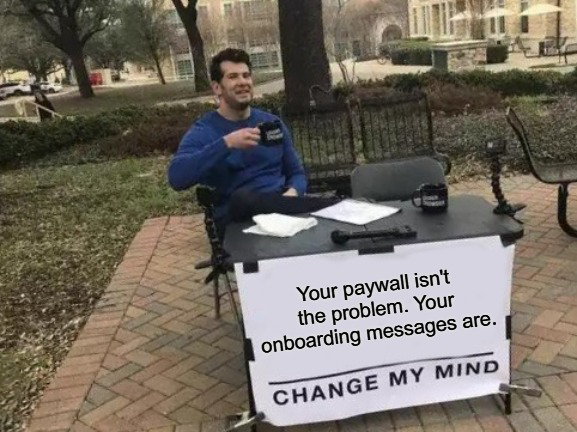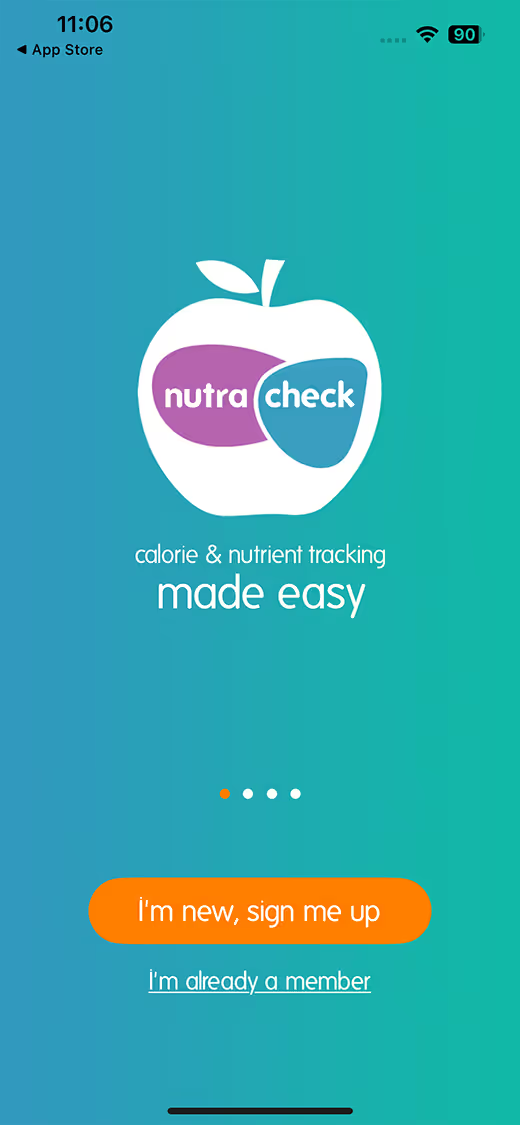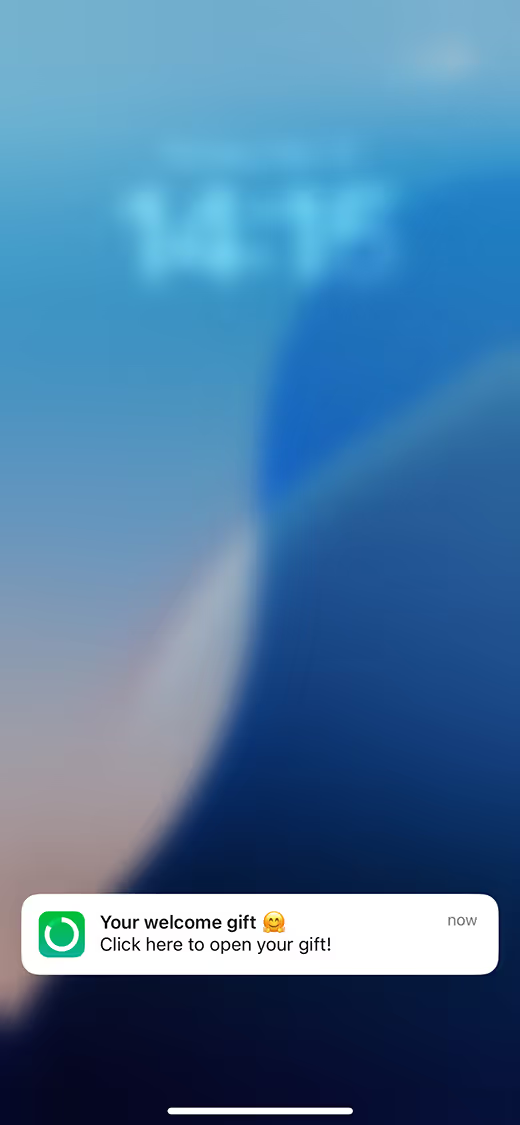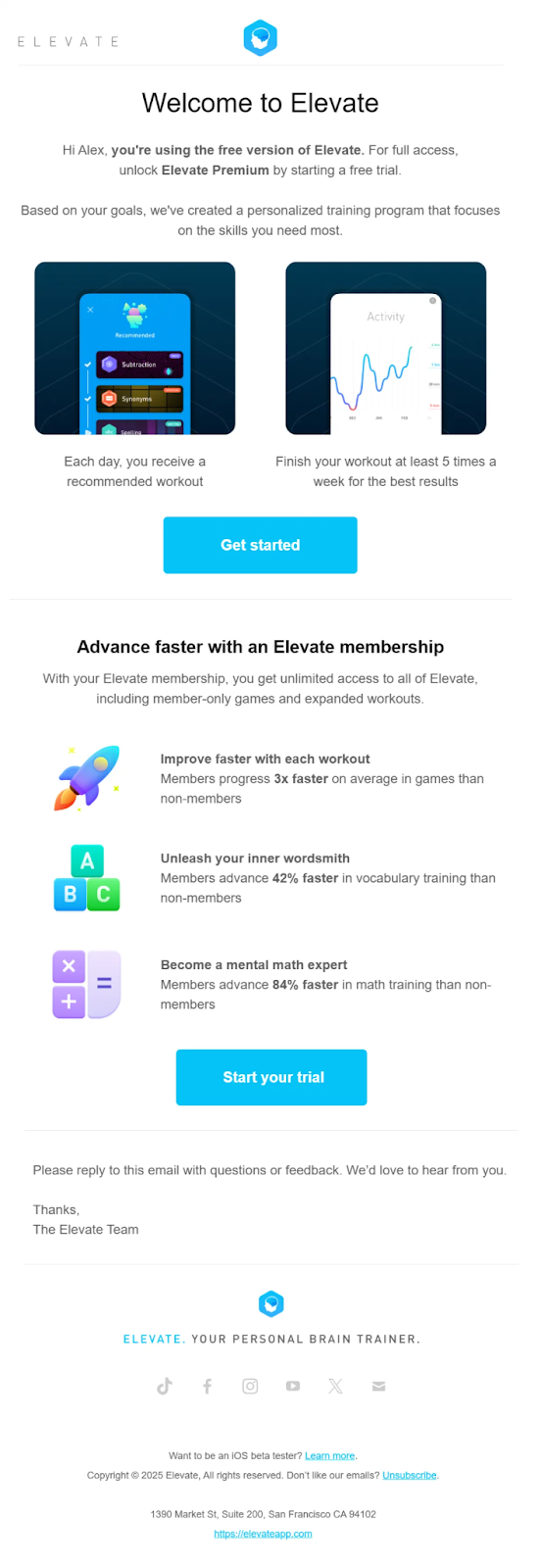
Alex Anikienko
Expert Writer
July 23, 2025

Alex Anikienko
Expert Writer
July 23, 2025

Here's a sobering fact: you have seconds to convince a new user that your app is worth their time. If you miss that window, they’ll likely join the 90% of users who abandon apps within the first week.
What is the difference between apps that convince and those that don't? Strategic onboarding messaging that creates an “Aha!” moment throughout the customer journey.
There’s no way to get new users on board unless you give them personalized 1:1 communication that makes them want to use your app regularly. Without that, you’re just leaving money on the table.
Research shows that 63% of users consider the onboarding experience a key factor in their decision to subscribe. When implemented properly, an automated welcome flow is the main string to your customer engagement bow. Personalized welcome screens, prompts, emails, and guiding in-app tips triggered by user behavior can increase retention by up to 50%.

There are several common pitfalls at the early stage of communication building. They cause users to churn before they meet your value proposition.
A ho-hum or complicated onboarding process will cause users to leave early. 74% of potential customers will abandon an app if they face friction at the start. Requiring account creation, multiple permissions, or long tutorials up front can feel like too much “work.” Every extra step is an opportunity for a drop-off.
The best practice is to reduce those obstacles. Simplify flows and consider offering one-click social logins, which have been shown to boost completion rates by 60%.
Another issue is overwhelming users with features and details, rather than showing how the app benefits them. Users care about one thing: “What’s in it for me,” and they’ll drop off if you don’t explain why before showing how. Research reveals that 80% of subscribers will slip away if they can’t quickly perceive the app’s value and understand the basics of using it.
Spamming new users with dense feature tours or technical how-tos can confuse them. Successful onboarding messaging, on the other hand, highlights the core value proposition first: the key problem your app solves or the outcome it enables. Data-driven, trigger-based communication introduces features in the context of that value.
Generic onboarding messages fail to engage because they have different goals and backgrounds. If your first “hello” doesn’t address essential customer needs, your offer will seem irrelevant. Apps that personalize the onboarding process (e.g., by asking about user goals or skill level) see higher engagement and conversion rates. For example, interactive onboarding flows tailored to real actions can increase feature adoption by 42%.
Use the data you have, like a user’s name, preferences, or behavior, in your welcome messages to establish a connection that will generate recurring revenue or sales.
Many companies drop the ball by going mute when users require help the most. If a user gets stuck or doesn’t know what to do next, they may simply quit. However, well-timed, contextual hints during onboarding can boost 1-week retention by 30% by preventing users from feeling lost.
Follow up with newbies before and after the sign-up (with welcome emails or push reminders) to encourage making the next conversion. Remember that a “silent” onboarding, where proactive communication is missing, often results in users forgetting about the app entirely.
Bulk messaging to no-names doesn’t work. The opposite extreme isn’t any better. Some apps bombard new users with too many alerts via email, push notifications, and in-apps all at once. This can be counterproductive because it typically feels intrusive and annoying.
The key is to strike a balance by providing concise guidance and gentle reminders rather than an avalanche of pings. The content and timing of each notification should feel like helpful guidance from a coach, not the pressure of a pushy salesperson or a confusing cacophony.
The sooner your team identifies these common pitfalls, the sooner they can start fixing them. The goal is to create an instant, seamless, personalized, value-oriented onboarding flow that gives users an “Aha!” moment with minimal friction.
To help product teams avoid conversion-killing mistakes, learn the best practices, and eventually come up with a truly engaging welcome process, Reteno has assembled an Onboarding Gallery. It is a curated, yet free, collection of real-world onboarding flows from successful mobile apps. The gallery demonstrates how top subscription and IAP-based apps welcome users, activate them, and guide toward a subscription, all through automated messaging.
What’s inside the Reteno Onboarding Gallery? Examples of multi-channel onboarding campaigns by leading apps in the Health, Fitness, and Education domains (with more to come soon). You’ll find step-by-step screenshots of app and web onboarding flows, push notifications, and welcome funnel emails, all segmented by use case. For example, you can see how a fitness app uses motivational tips during onboarding, or how an EdTech app leverages email reminders to encourage new sign-ups to complete their first lesson.
Each example in the gallery comes with context on why it works, whether it’s “breaking the ice”, highlighting a key feature, or creating a sense of progress. By exploring these proven onboarding messages, your team can skip the trial-and-error and implement strategies that are proven to work.
The collection also includes the timing and logic behind the messages. Feel free to use it as a blueprint or simply a spark for creative ideas.
Moreover, Reteno’s App Onboarding Screenshots Gallery directly addresses the pitfalls we discussed. It’s like having a playbook of onboarding best practices, specific to mobile growth and monetization. Best of all, these examples are drawn from apps that have significantly improved metrics, such as activation, retention, and trial conversion.
Next, we’ll break down a few of these real-world examples from the gallery, providing insights into their effective mechanisms.
The examples below work because they respect one truth: onboarding is less about providing instructions and more about emphasizing value, building trust, and naturally guiding users toward habits that lead to conversions. The top apps follow this blueprint: keep the visuals clear, the copy focused on the user’s goals, and the messaging flow timed to match real-life behavior.

Onboarding screens in Calorie Counter + are simple and focused. Without any visual clutter, each screen has one clear purpose: to demonstrate value, request essential information only, and guide the user to their first logged meal. Clean progress indicators and step counts help reduce anxiety. Large, obvious call-to-action (CTA) buttons and clear visuals guide the user’s eye. This keeps cognitive load low, which is critical for those trying the app for the first time.
The flow smartly delays heavy data entry until the user understands why it matters. The progression leads straight to logging the first meal, so the user immediately perceives the product’s value. Only then does the app hint at premium features, planting the upsell seed without feeling intrusive.
✅ Why it works
This example addresses the primary onboarding challenge for wellness apps: a complicated sign-up process. It keeps the screens fast, clear, and benefit-focused. The immediate quick win (logging your first meal) builds momentum and makes it easier to form a daily habit. This is textbook Activate & Convert done right: low friction, clear value, and a soft premium nudge once trust is earned.

These push notifications are minimalist by nature. They contain short text, sometimes an emoji, clean formatting that pops on a lock screen. Carefully timed, they pop up when they’re relevant.
The push series aligns with the user’s routine, providing reminders to start or stop a fast, tips to stay on track, and subtle cues about advanced coaching plans when the user shows consistent activity. This real-time relevance helps users progress through the three stages: Activate (fasting), Nurture (encouragement), and Convert (highlighting premium features once the habit is formed).
✅ Why it works
Push onboarding often fails because messages are considered spammy. BodyFast avoids this by timing alerts to the actual faster behavior, delivering real value when needed. Motivation and habit loops maintain high retention, and users who feel supported are more open to upgrading to paid coaching. This is a perfect example of how messaging can work as a gentle habit coach, which is exactly what wellness apps need to keep freemiums engaged and ready to convert to payers.

Elevate’s onboarding emails are clear, brand-consistent, and “digestible.” They break content into short paragraphs or bullet points, typically with bolded performance stats, graphs, or progress badges, to make improvements feel rewarding. CTAs are prominent but never pushy, blending in naturally with the helpful content.
Rather than sending a single welcome email, Elevate sends a well-paced series. This series encourages the first session (Activate), celebrates small wins (Nurture), and introduces premium modules or discounts once the user sees results (Convert).
✅ Why it works
Long onboarding via email works because it extends the “first week” experience into a month or more, nurturing customers long after install. Elevate’s emails turn passive users into active ones by highlighting progress and next steps, while soft-selling premium features when users convert. “Onboarding never ends” is a best practice for subscription and IAP apps, and this is a perfect real-life example of it.
To engage a new user, you get just one shot at a first impression. And onboarding done the right way is that very chance. As you’ve seen, behavior-guided onboarding flows can significantly move the needle. Early retention soars because users immediately grasp your value. Conversions climb because trust builds naturally through consistent, helpful interactions. Premium features sell themselves because users already depend on your app.
Invest in your onboarding strategy! Audit your current flow for the common pitfalls we described. Use proven examples in the Reteno’s Onboarding Gallery to borrow ideas that actually work from top businesses.
Onboarding is an ongoing effort. It continues into the user’s early lifecycle as you refine their experience and maintain engagement. The good news is, you don’t have to do it single-handedly or from scratch. Reteno can help you implement all of these onboarding messaging strategies with no fuss. Our platform is designed to drive retention and monetization for mobile apps. It provides advanced tools for creating personalized welcome campaigns, in-app guides, and trigger-based message chains.
Ready to take your app’s onboarding to the next level and turn more new users into lifelong customers? Request a demo today to see how our messaging automation platform can empower your team to build experiences that convert.
Alex Danchenko
|
November 29, 2022
Learn all about the onboarding process: why it matters, types of onboarding, and best practices with real examples
Alex Danchenko
|
June 3, 2025
Find out diverse customer retention strategies across industries to nurture loyalty and boost business success

